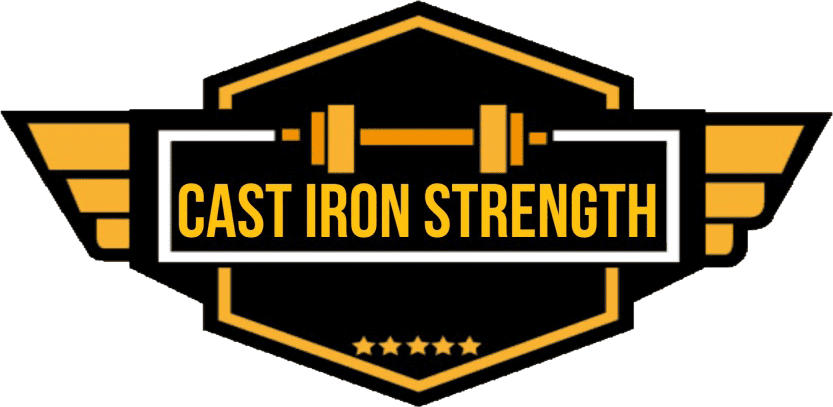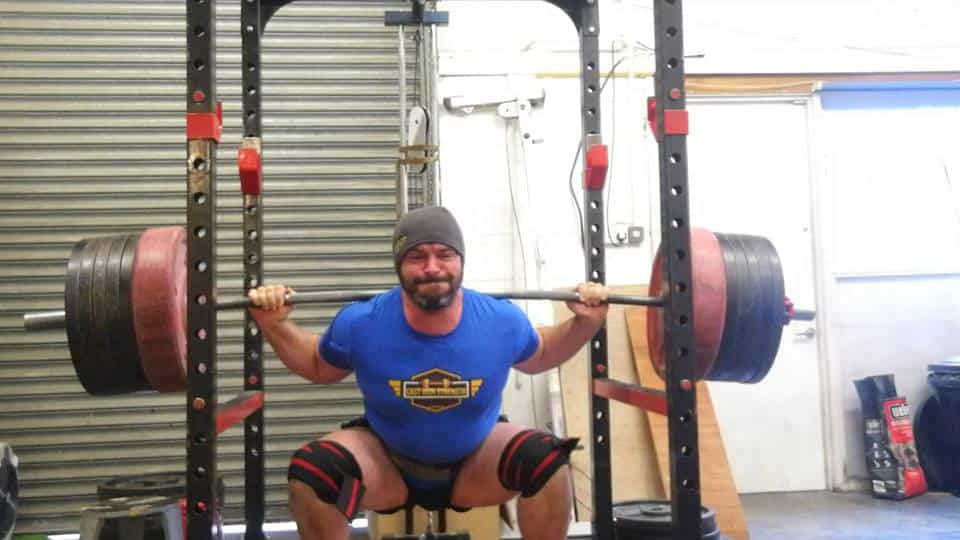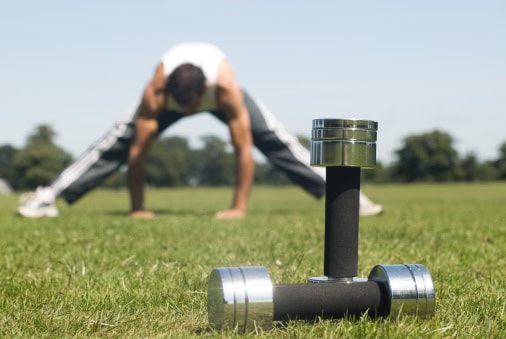What is a powerlifting belt?
Unlike most other lifting belts a powerlifting belt is normally the same width along the whole length of the belt. This originates from the International Powerlifting Federation‘s rule book they set out very specific dimensions that equipment manufacturers must adhere to if they want their lifting belt to be allowed to be used with in IPF sanctioned competitions.
Powerlifting belts come with four common ways of fastening the belt each which has it’s own draw backs and pluses. Below we discuss this in brief detail and outline the plusses and minuses of each design.
Single Prong Belt
The single prong belt has a central metal prong that fits through one of the previously drilled holes through the belt itself it is probably the simplest design or leas engineered of any powerlifting belt.
Pros
- Easy to adjust as you lose or gain weight.
- Can be shared easily with lifting partners or new people who don’t have their own equipment.
- Quick to put on and take off if not wearing it tight.
- Simple level of engineering means not a lot can go wrong.
Cons
- Pain to get tight can need a friend to help you pull it in.
- Even bigger pain to get off if it is in super tight.
- Single prong design more likely to sheer with time.
Double Prong Belt
Pros
- Easy to adjust as you lose or gain weight.
- Can be shared easily with lifting partners or new people who don’t have their own equipment.
- Quick to put on and take off if not wearing it tight.
- Simple level of engineering means not a lot can go wrong.
Cons
- Even bigger pain to get tight than single prong belt can need a friend to help you pull it in.
- Can often be easier to get off when it is super tight as easier to angle one of the top or bottom prongs to wriggle it free.
- Double prong design less likely to sheer with time when compared to single prong.
Ratchet Belt
Pros
- Can adjust to the tightness you want pretty easily.
- Once the belt is set to the tightness you want it will stay there securely.
- Easily customisable to any tightness you want.
Cons
- A useless flap of leather (the part of the belt you aren’t using) with no sleeve to secure it out of the way.
- Over Engineered so you know something at some time is going to go wrong check out Chris Perugini getting stuck in his Inzer belt below!).
Lever Belt
Pros
- Incredibly easy to tighten and untighten just simple “flip the lever like a boss” to tighten or release.
- Very secure design high unlikely to come loose unless you buy a crap quality belt (see below).
- Can get it tighter than pretty much any belt.
Cons
- Only adjustable by unscrewing and replacing level mechanism further down the belt (only real down side but it can be a big one!).
SBD Belt
I have been using the SBD lever belt since summer last year and I must say it is the best-engineered belt I have ever used. Its construction is solid and the mechanism adds all of the positive factors of the lever belt (getting as tight as you need it quickly) with none of the draw downs (having to unscrew and re-screw the belt when you want to change the tightness). It is however sold at a premium and may be too bulky for some.
Pros
- Incredibly easy to tighten and untighten.
- Very Securely designed.
- Can get it as tight as you want it.
Cons
- £165
- Will be just another SBD fanboy when it releases.
- Can be a bit bulky for deadlift.
How to wear the belt?
Often people think the action of the lifting belt is either to “support/protect the spine” or it’s just a tool to allow you to lift more weight. The belt is used to decrease the volume of your torso by constricted it. This increases dramatically the amount of pressure that is created within the abdomen which in turn makes the trunk much more solid. This increase in pressure means the trunk is much more difficult to deform and this, in turn, supports the spine. It can be common for some people to have better lifting technique in a belt this is due to the increased solidity of their trunk.
There are two main ways to wear a powerlifting belt the first is low on the torso. You should look to wear it as low as you can get the belt without impeding your thigh during a squat (you will know about this as it will hurt like hell when the belt cuts into your thigh!). The reason why you will want to do this on squat, sumo deadlift and conventional deadlift for most lifters is that it is the best way to increase the pressure through the whole torso. Think of squeezing a water balloon if your squeeze it at the distal end the entire balloon increases in pressure if you squeeze it in the middle two compartments increase in pressure and as a whole, the balloon becomes floppy around a fulcrum.
You can wear it higher up on the torso as popularised by George Leeman you can hear in depth his thoughts in the above video. The central idea is that it will support your thoracic spine and hold you in extension during a heavy deadlift. However this only really works well for heavier lifters since the belt doesn’t have a gut to anchor itself onto if you’re lean! (thanks to Nick for pointing out this simple but enlightening point).
Wearing the belt during a bench press?
There is no real rationale for wearing a belt during the bench press some people feel it supports their arch better and some people think they can get tighter wearing it. None of these people is wrong because if it makes them feel more secure of stronger then they are going to be more secure and will be stronger as placebo is as real as most of the things that we do in sports science. It is completely down to personal preference I can’t offer an objective argument and it isn’t going to have a negative effect so have at it.
Is wearing the belt bad for training my core?
A common question with athletes or those who are not worried about the absolute amount of weight they can lift wonder if the belt is robbing them of a core training stimulus. The research is equivocal on this subject with some studies show increased oblique activation and some showing increased oblique activation. Almost no studies have shown a change in rectus abdominis activation and some have shown an increase in erector spinae activation. In short, it will make little to no difference and you can lift more weight.
When should I wear my belt during training?
There are some instances where wearing a belt can be advantageous to not wearing it such as
- 8-12 week prior to a competition.
- During an overreaching or peaking phase.
- When you’re trying to push your strength.
And times when it can be advantageous to not wear it
- During off season.
- Periods of technique focus trying to be better coordinated.
- Lighter periods of training or preparation blocks where the focus is volume not overload.
The ultimate answer is the same to all of these questions it depends on the context in which you are asking the question and therefore there exists no cookie cutter answer.
https://www.instagram.com/p/BFjnuXkj1R-/
How much should I spend on my belt and what one should I get?
First one is easy – spend as much as you can afford to pay for one. Sure some of the cheaper manufacturers might offer a lever belt for half of the price or some of the single or double prong belts you can get for 10-20 quid online, however, there are three main reasons you should look to buy a good belt.
- Good belts will last you for over a decade, cheap belts will more than likely need replacing in 2-3 years.
- Most cheap belts aren’t IPF legal anymore.
- A good belt made with a sturdy or stiff material is more likely to lead to an increase in your strength acutely as it will definitely supply good support.
The best thing you can do is try out some different belts and lift in them if your friend has one of the 4 or 5 belts we discussed above ask them if you can wear it during a session and make your mind up from there. When you are sure on the belt you would like to use then make sure you buy the best quality one you can afford!
Marc






















